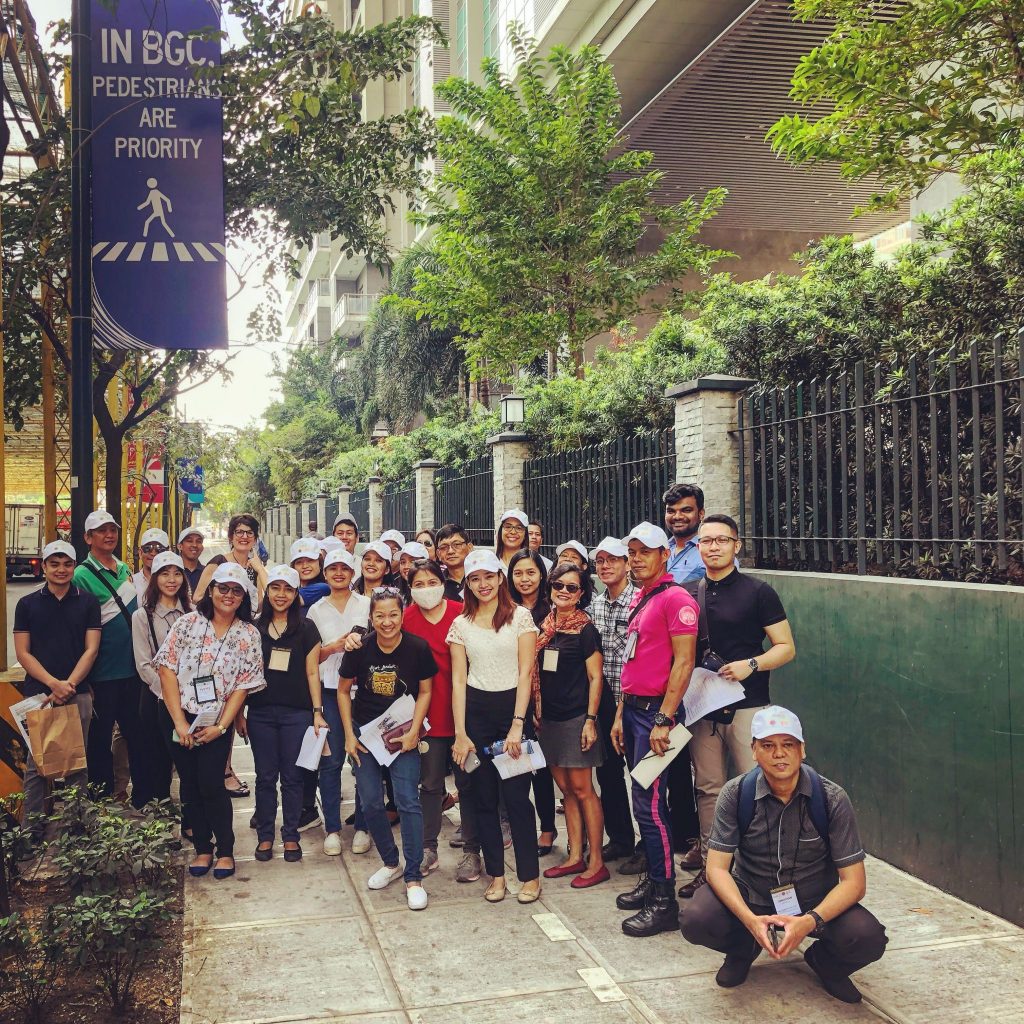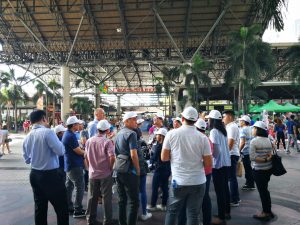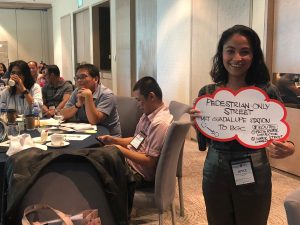
Walking is the most common form of mobility and is generally how all trips start and end. Yet pedestrians are often forgotten in favor of motorised modes, resulting in congested and unsustainable cities with space for cars but not its residents. While there is growing acknowledgement that walking is the healthiest mode of mobility and is one of the biggest social equalisers in the world, the delivery mechanisms to promote walkability are often not comprehensive or lacking.
To address this gap, the NGO Walk21 developed an 8 Steps to Walkable Cities approach which, upon invitation from GIZ, they presented for the first time during a regional workshop in Metro Manila, Philippines, on 13-14 February 2019. The workshop was attended by over 60 participants with representatives from the government, private sector, and academe of India, Lao PDR, the Philippines, Thailand, and Viet Nam.
Entitled 8 Steps to Walkable Cities in Asia, the workshop was jointly hosted by the Department of Transportation of the Philippines (DOTr) together with the Transformative Urban Mobility Initiative (TUMI), supported by the German Federal Ministry for Economic Cooperation and Development (BMZ) and the MobiliseYourCity Partnership (supported by TRANSfer III through the BMU).
Too often have we built roads without appropriate sidewalks. Pedestrians have been an afterthought, if they have been thought of at all, and it is time to change the paradigm from car-focused planning with very poor connectivity and accessibility to public transport to one where the convenience of people matters most.
Acting Undersecretary Mark de Leon of DOTr
To start the workshop, Walk21 shared the International Charter for Walking. Launched in 2006, the Charter is a common policy reference with eight strategic principles that aims to promote walkability:

Participants were then asked which principle most aligned with their priorities (number 2: well-designed and managed spaces and places for people); which principle they had the most influence to impact (number 3: improved integration of networks); and which principle they could provide ideas the most ideas for in terms of future policy and projects (also number 3). The ideas identified by the participants include:

Walk21 Founder Jim Walker and CEO Bronwen Thornton tied in these ideas from the participants with their 8 Steps, case studies from around the world, and a walking audit in Manila..
Walk21 highlighted that the motivation behind a commitment to walking may differ for every city. For example, while London and Vienna promote walkability in the context of health and quality of life, respectively, Sydney and New York do it in the context of the economy. Citing examples from Asia, they noted that Seoul is committed because of road safety and Singapore because of climate. This highlights the need to involve and engage communities.
After the two-day workshop, it was evident that while there is some political commitment for the promotion of walkability in Asian cities, the benefits of walkability policies and projects would benefit from easy-to-understand data or evidence in regard to road safety, accessibility, economic vibrancy, and the environmental impact. Participants highlighted need to create a supportive planning framework, enable stakeholders to implement well-designed walking infrastructure (=policy through design). The importance of local governments was emphasized but local capacity to deliver walkable communities/corridors appears to be very limited. Therefore, comprehensive capacity building strategies have to be developed by governments in the region to deliver on policy objectives around improving walkability in Asian cities. Walking along the busy streets of Manila, Hanoi, or Tamil Nadu is sometimes difficult to navigate as pedestrian and very often it is unsafe and unhealthy. Thankfully, this regional workshop discussed the feasibility of 8 steps towards improving the walking experience in Asia.
Walking is who we are as a people…. We celebrate it when children start walking and really resent it when we have to give it up as we grow older.
Bronwen Thornton, CEO Walk21
Walk21, TUMI, MobiliseYourCity and GIZ are here to support stakeholders worldwide to make life for pedestrians safer, healthier and more joyful. Please get in touch if you want to improve the walkability in your city.
 © Christian Mettke
© Christian Mettke

Patricia Mariano